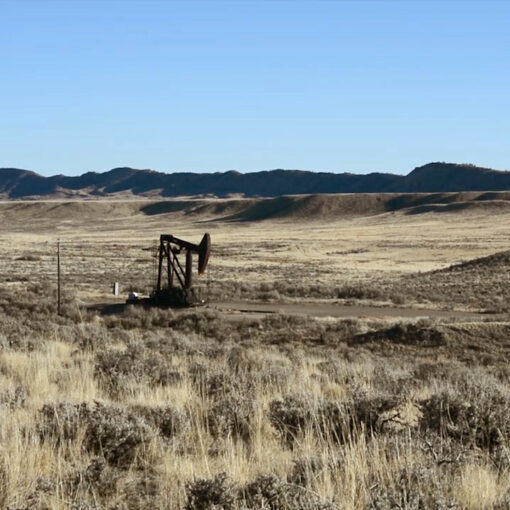By Jessica Wentz and Michael Burger
Last year, the D.C. Circuit Court of Appeals issued a key decision on the scope of greenhouse gas emission impacts that must be considered by the Federal Energy Regulatory Commission (FERC) in environmental reviews of pipeline projects. In Sierra Club v. FERC, No. 16-1329 (2017), the court held that FERC’s NEPA analysis for a natural gas pipeline project was insufficient because FERC had failed to consider the greenhouse gases generated by the combustion of the natural gas that would be transported via the pipeline. This decision was significant insofar as it clarified that the evaluation of downstream combustion emissions – which courts had previously required for coal mines and coal railways – is also required for FERC reviews of at least some natural gas pipelines.
There are now several pending cases and administrative challenges that raise additional questions about the nature of federal agency obligations to assess indirect greenhouse gas emissions from pipeline approvals. For example, are agencies required to evaluate upstream emissions from induced natural gas development, as well as downstream emissions? How exactly should an agency go about assessing the “cumulative impact” of those emissions when added to other past, present, and future actions? And are there other factors that an agency should consider when assessing the significance of these emissions, such as the social cost of those emissions? These questions are now being litigated in the D.C. Circuit and the Second Circuit. They are also relevant to assessing the adequacy of the supplemental EIS that FERC is currently preparing on remand from Sierra Club v. FERC.
Sierra Club v. FERC, D.C. Cir. No. 16-1329 (2017)

This case involved FERC’s review of the Southeast Market Pipelines Project, which is comprised of three natural gas pipelines currently under construction in Alabama, Georgia, and Florida. The Sierra Club challenged the adequacy of the EIS prepared for this project, alleging, among other things, that FERC improperly failed to consider downstream emissions from the combustion of natural gas transported via the pipeline as “indirect effects” of this project – i.e., “effects which are caused by the action and are later in time or father removed in distance, but are still reasonably foreseeable” (50 C.F.R. § 1508.8).
The D.C. Circuit found that the combustion emissions were both foreseeable and causally linked to the approval of the pipeline project. With regards to foreseeability, the court noted that the project was intended to transport the gas to power plants in Florida, some of which already existed, others of which were in the planning stages. Thus, the court noted that the combustion of the gas “is not just ‘reasonably foreseeable,’ it is the project’s entire purpose.” With regards to causation, the court held that because FERC can act on information about greenhouse gas emissions and climate change impacts when deciding whether to issue a pipeline certificate, and because FERC can deny the certificate if it finds that the project would be too harmful to the environment, FERC’s approval is a “legally relevant cause” of the downstream effects of combusting the gas. (We discussed these issues at length in our paper on Upstream and Downstream Greenhouse Emissions: The Proper Scope of NEPA Review (2017)).
The court held that quantification of the downstream greenhouse gas emissions was required. In reaching this decision, the court rejected FERC’s argument that it is impossible to know exactly what quantity of greenhouse gases will be emitted due to the approval of the pipeline because it depends on uncertain variables such as the operating decisions of individual plants and demand for electricity in the region, noting that NEPA requires agencies to conduct “reasonable forecasting.” FERC had already estimated how much gas the pipelines will transport and, the court found, had given no good reason as to why this number could not also be used to estimate greenhouse gas emissions from power plants. The court also rejected FERC’s argument that it need not quantify combustion emissions because some of the natural gas would replace dirtier fossil fuels, thus offsetting the project’s emissions estimates. The court found that a purely qualitative analysis of substitution was inadequate because “[a]n agency decisionmaker reviewing this EIS would… have no way of knowing whether total emissions, on net, will be reduced or increased by this project, or what degree of reduction or increase will be.”
In light of all this, the court held that the downstream greenhouse gas emissions are an indirect effect of authorizing the project, and that those emissions should be quantified:
[Quantification] would permit the agency to compare the emissions from the project to emissions from other projects, to total emissions from the state or region, or to regional or national emissions-control goals. Without such comparisons, it is difficult to see how FERC could engage in ‘informed decision making’ with respect to the greenhouse-gas effects of this project, or how ‘informed public comment’ could be possible.
The court also directed FERC to discuss the significance of the emissions, as well as the cumulative effects of the emissions – that is, “the incremental impact of the action when added to other past, present, and reasonably foreseeable future actions.” This third aspect of the court’s order raises questions about what would suffice for a cumulative impacts analysis in this context – a question which is front and central the Allegheny Defense case, discussed below.
Finally, the court addressed whether FERC must link the downstream emissions to particular climate impacts, such as sea level rise or an increased risk of severe storms. The Sierra Club recommended that the Social Cost of Carbon metric could be used as a proxy for those effects and a useful disclosure tool. The court declined to issue a ruling on this matter, and instead directed FERC to explain in the supplemental EIS whether it would utilize the SCC metric and if not, why.
On remand, FERC prepared a draft supplemental EIS in which it estimated that the combustion of natural gas from the pipeline would generate 8.36 million tons per year of carbon dioxide (CO2) emissions. This is a large emissions impact – according to EPA’s Greenhouse Gas Equivalency Calculator, it is roughly equal to the emissions from: (i) approximately 1.8 million passenger vehicles driven each year, or (ii) approximately 1.25 million homes’ electricity use for one year. Nonetheless, FERC quickly dismissed the significance of the emissions and also declined to estimate the social cost of the emissions (which, according to estimates set forth in our comments on the DSEIS, would be roughly $306 million during the first year of operation and would rise to approximately $492 million per year by 2040). The DSEIS is currently under FERC review.
Allegheny Defense Project v. FERC, D.C. Cir No. 17-1098 (2017)
This case involves FERC’s environmental review and approvals for the Atlantic Sunrise Pipeline Project. The facts of this case are somewhat different from the Southeast Market Pipelines case: FERC did quantify downstream emissions in the EIS, and found that the combustion of the natural gas transported via the pipeline would contribute 32.9 million metric tons of CO2 per year. At the same time, FERC stated that the gas would likely displace use of oil and coal, resulting in a potential reduction of regional greenhouse gas emissions. Apart from this qualitative statement, FERC did not attempt to assess whether total regional emissions would increase or decrease as a result of the pipeline project.
Environmental groups filed suit in the D.C. Circuit, arguing that FERC failed to adequately analyze the climate change impacts of the end use of the gas to be transported by the project. Specifically, they alleged that FERC improperly overlooked: (i) the net emissions impact from combustion (taking into account potential energy substitutions), (ii) the significance of the emissions, (iii) the cumulative impact of the emissions (in terms of climate change effects or social costs), and (iv) the extent to which the emissions impact might be reduced through mitigation measures or alternatives to the proposal. They also challenged FERC’s failure to evaluate upstream impacts from natural gas production – an issue which was not decided by the D.C. Circuit in Sierra Club v. FERC. To support their argument, the plaintiffs cited the NEPA regulations on indirect effects, which require agencies to consider “growth inducing effects and other effects related to induced changes in the pattern of land use, population density or growth rate, and related effects on air and water and other natural systems, including ecosystems” (40 C.F.R. § 1508.8(b)), and presented evidence of specific drilling operation plans that were contingent on the approval of the pipeline.
The court has denied plaintiffs’ emergency motion to stay construction of the pipeline. It remains to be seen how the court will respond to the plaintiffs’ arguments on the merits. With respect to downstream emissions, the court may require additional analysis to establish a quantitative net GHG emissions estimate. Or, the court might distinguish the Atlantic Sunrise Pipeline from the Southeast Market Pipelines based on the fact that FERC already quantified emissions from combustion. With respect to upstream emissions, the court’s previous finding that FERC’s approval is a “legally relevant cause” of induced natural gas consumption could apply to induced natural gas production as well, leading to the first decision requiring upstream analysis for pipelines.
Other Cases and Administrative Adjudications
There are also one other pending case and several administrative adjudications involving FERC’s obligation to address downstream and upstream emissions from pipelines:
- Catskill Mountainkeeper, Inc. v. FERC, 2nd Cir. No. 16-345 (2016): This Second Circuit case involves the EIS for the Constitution Pipeline and Wright Interconnect Projects.FERC did not quantify or discuss potential downstream and upstream emissions in the EIS, but it did use the Social Cost of Carbon to project potential costs associated with the direct operational emissions (136,559 tons CO2e per year) and found that those costs would range from $1.6 – $8.3 million in 2015, depending on what discount rate was applied. Petitioners allege that FERC violated NEPA by: (i) ignoring the “growth inducing effect” of the project on natural gas production and consumption; (ii) ignoring “potentially significant” sources of greenhouse gas emissions, such as the destruction of carbon sinks, and downplaying the significance of the emissions by comparing them to national and global emission totals (to make the emissions impact for this project appear smaller); (iii) ignoring construction emissions from future years of operation when using the SCC to disclose emission costs; and (iv) failing to adequately evaluate the cumulative impacts of this and other pipeline development projects in the area.
- In re Atlantic Coast Pipeline, LLC: Environmental groups have filed a request for a rehearing and rescission of FERC’s authorization for the Atlantic Coast Pipeline. The groups assert, among other things, that FERC failed to adequately assess upstream and downstream impacts associated with induced natural gas development and consumption.
In re Millennium Pipeline Co.: The New York State Department of Environmental Conservation (NYSDEC) requested a hearing and rescission of FERC’s authorization of the Valley Lateral Project in New York. Among the objections raised by NYSDEC was FERC’s failure to assess the project’s downstream greenhouse gas emissions in the environmental assessment prepared for the project. In the order denying NYSDEC’s motion for a rehearing, FERC stated that it was in compliance with the D.C. Circuit’s ruling in Sierra Club v. FERC because the order approving the project included data on combustion emissions from a 2009 analysis conducted pursuant to New York State Environmental Quality Review Act. A similar lawsuit has also recently been filed in federal district court involving the U.S. Army Corps of Engineers’ review for a crude oil pipeline in Louisiana (Atchafalaya Basinkeeper v. U.S. Army Corps of Engineers, No. 3:18-cv-00023 (M.D. La., filed Jan. 11, 2018)). There, plaintiffs have alleged that the Corps violated NEPA by failing to “assess the climate impacts of ‘locking in’ future reliance on fossil fuels” that would be induced through additional investments in oil infrastructure.
Key Questions Going Forward
Downstream Emissions: Is Bare Quantification Enough? The D.C. Circuit has made clear that downstream emissions from natural gas combustion are indirect effects of natural gas pipeline projects, at least where the pipelines feed into a known universe of existing and anticipated power plants, and that agencies should quantify those emissions when the tools and data are available to do so. Emission factors are available to project combustion emissions per unit of natural gas transported, and thus FERC has the tools needed to quantify downstream emissions whenever the quantity of transported gas is known or projected. But is quantification enough on its own? Can FERC simply dismiss the significance of those downstream emissions by qualitatively asserting that the gas may displace other dirtier fuels, or through some other reference to uncertainty about future energy use and global emissions?
Significance Thresholds: How Much Will Courts Defer to FERC and Other Agencies? A related question is whether there is some threshold at which the court will overturn a determination of insignificance with respect to greenhouse gas emissions. Courts are likely to find a legal deficiency in an EIS where the analysis omits any real discussion of emissions. Courts are more reluctant to overturn findings and conclusions, especially significance determinations, where an analysis has been conducted. In addition, determining “significance” in this context is difficult, given the cumulative and global nature of the climate change problem. That being said, even without knowing the exact threshold of significance, it is possible to identify projects where emissions clearly are “significant” by any reasonable measure. Consider the Southeast Market Pipelines Project: the potential costs of the project’s indirect emissions would reach approximately $492 million per year by 2040. It is hard to imagine that this correlates to an insignificant environmental impact.
Upstream Emissions: Analysis Also Required? While it is now clear that FERC must evaluate downstream emissions in at least some contexts, no such holding has been issued with respect to upstream emissions from natural gas development. The rationale for analyzing these emissions is the same for downstream emissions: induced natural gas development is as much an “indirect effect” of a pipeline approval as the induced consumption of the gas. We can expect to see more definitive holdings on this issue from the D.C. Circuit in Allegheny Defense Project and from the Second Circuit in Catskill Mountainkeeper.
Cumulative Impacts Analysis: Will a Programmatic Review Be Required? The ongoing development of natural gas infrastructure has important implications for the fight against climate change and the transition to a zero-carbon economy. One key question is whether FERC will eventually be compelled or persuaded to conduct a programmatic EIS for natural gas development. Such a programmatic review was planned for the federal coal leasing program during the Obama Administration, but those plans were quickly scrapped by the Trump Administration (a decision which has also been challenged in court). We recommend our article on Upstream and Downstream Greenhouse Gas Emissions for a more in-depth discussion of this topic.
Will Agency Decision-Making Change? Judicial oversight has been valuable insofar as it has prompted better disclosures of climate impacts. But will better disclosures lead to better decisions? Given the deregulatory agenda of the current administration, the answer is likely “no” in the short term. But in the long term, the emissions information gathered in these documents will make it easier to understand the emissions impact of different projects and sectors and make informed decisions about how to proceed with the development of energy infrastructure.
Romany Webb is a Research Scholar at Columbia Law School, Adjunct Associate Professor of Climate at Columbia Climate School, and Deputy Director of the Sabin Center for Climate Change Law.





